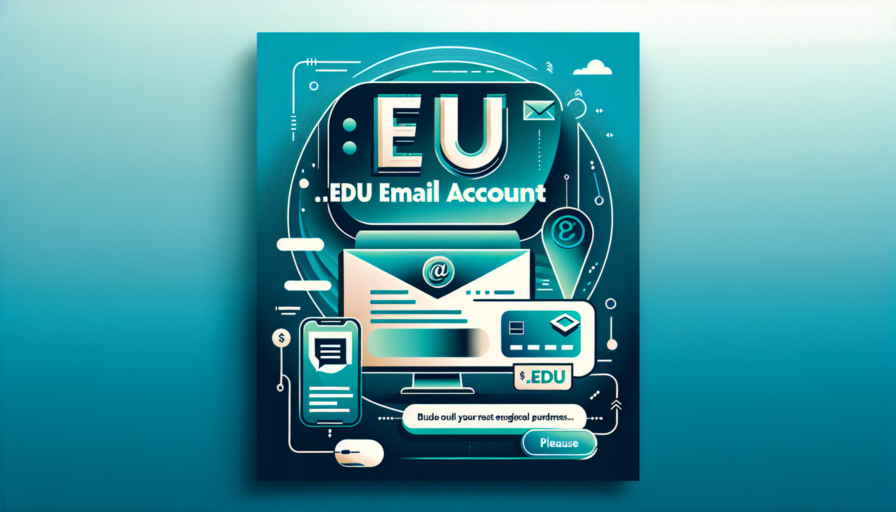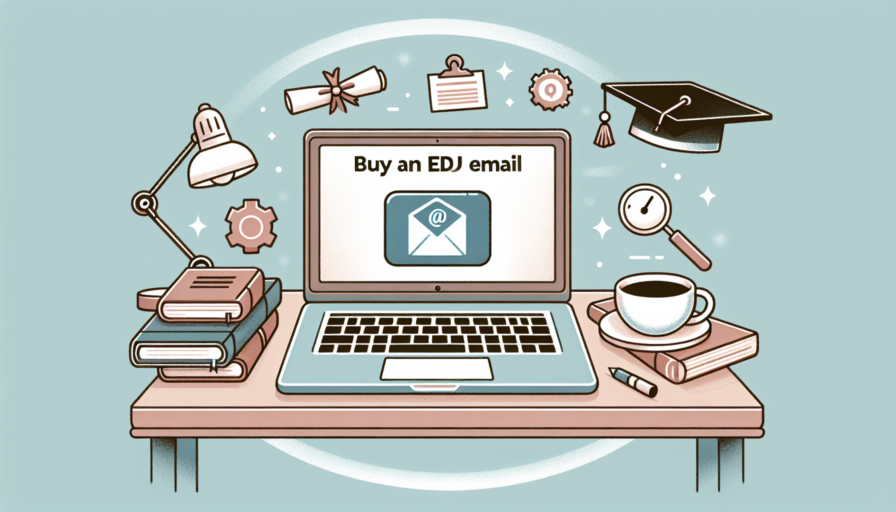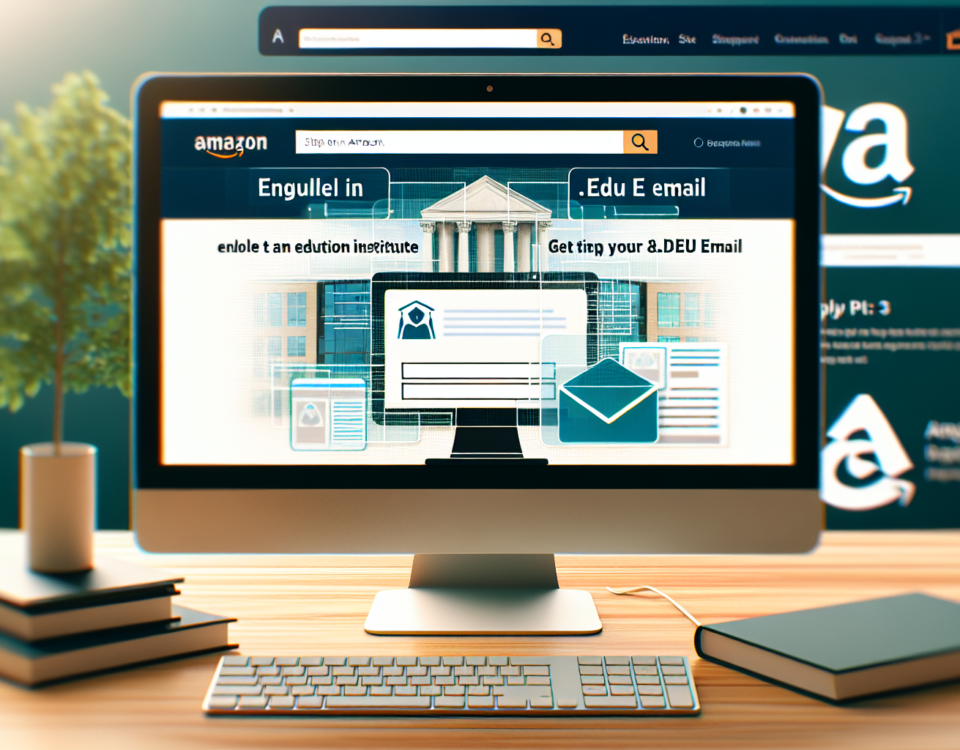
How to Access and Maximize Your Arizona Edu Email Account Benefits
February 15, 2024Ultimate Guide to Accessing Edu Mail on Outlook: Tips and Tricks for Students
February 15, 2024What is an Edu Email and How Does It Benefit You?
An edu email address is not just any regular email account; it is a special type of email account provided by colleges and universities to their students, faculty, and sometimes alumni. These email addresses typically end with a ‘.edu’ extension, which is reserved exclusively for educational institutions in the United States. Having an edu email account carries a certain level of prestige and authenticity, as it signifies an association with an academic institution, providing an instant verification of educational status without the need for additional documentation.
One of the main advantages of having an edu email account is the access to a wealth of educational resources and software discounts. Companies such as Microsoft and Adobe offer significant discounts on their products for users with a valid edu email, understanding the limited budget of students and educators. In addition to software, educational resources including access to scholarly articles, libraries, and various databases, which normally require expensive subscriptions, are often freely accessible to edu email account holders. This can be invaluable for research and continuing education.
Beyond resources, edu emails often come with a suite of collaborative tools tailored to the academic environment including but not limited to cloud storage, email hosting, and online collaboration platforms that integrate seamlessly with other university systems. These tools are optimized for academic usage, facilitating group projects, classroom communication, and the sharing of academic material. They are designed to support the unique needs of the educational community, promoting an efficient and organized learning experience.
Additionally, having an edu email can confer various lifestyle benefits not directly related to education. Many retail and service companies provide discounts and special offers to those with edu emails, including reduced rates on technology, subscription services, travel accommodations, and even insurance. These can help to alleviate the financial burden on students and educators, making an edu email a gateway to a wide array of personal savings and lifestyle enhancements.
Step-by-Step Guide to Your Edu Email Sign In
Logging into your .edu email account might seem daunting, especially if you’re new to the college or university’s system. Here’s an easy-to-follow guide to help you access your academic email effortlessly. A .edu email not only signifies your association with an educational institution but also grants you access to a plethora of educational resources, discounts, and software. It’s important to ensure that you can reliably sign in to benefit from these opportunities.
Locating the Email Sign-In Page
First and foremost, you’ll need to find the official sign-in page for your educational institution’s email service. This can usually be done by visiting your college or university’s homepage and looking for a link labeled ‘Email’, ‘Webmail’, or ‘Outlook 365’. If you’re having trouble finding it, you can often find direct access by searching “Your Institution Name + Edu Email Login” in your preferred search engine, which should provide a direct link.
Entering Your Login Credentials
Once you’ve reached the sign-in page, you will be prompted to enter your login credentials, usually in the form of a username or email address and a password. Your username is typically assigned by your institution and may be a combination of your name and numbers, such as jdoe@yourinstitution.edu. If you’ve forgotten your credentials, look for a ‘Forgot My Password‘ or ‘Can’t Access Your Account?‘ link which will guide you through the process of retrieving or resetting them.
Understanding Multi-Factor Authentication
In today’s digital age, security is paramount, and many institutions have implemented multi-factor authentication (MFA) to protect your accounts. After entering your password, you might be asked to verify your identity using a secondary method. This could be a text message with a code, an authenticator app, or a phone call. Ensure that your MFA methods are set up and accessible whenever you attempt to sign in to your .edu email. Always keep your MFA devices, such as your mobile phone, handy during this step.
By carefully following each step of this guide, you’ll be able to access your .edu email account and take full advantage of the exclusive educational resources provided to you. Make sure to keep your login information confidential and to log out from shared or public devices to protect your personal and institutional data.
Common Issues and Troubleshooting Edu Email Login Problems
Dealing with edu email login problems can be frustrating for students and faculty members alike. A common issue faced is the infamous ‘incorrect password’ error. This may seem trivial, but with the frequent requirement to update passwords or the use of complex password rules, it’s easy to mistype or forget the correct combination. It’s essential to ensure the caps lock key is off and to verify that you are using the current password, bearing in mind any recent updates. If you’re still unable to log in, using the ‘forgot password’ feature to reset your credentials can often resolve this issue.
Another typical hiccup arises from account lockouts after multiple failed login attempts. This is a security measure to prevent unauthorized access but can catch legitimate users off-guard. In such cases, waiting for the specified cooldown period is a good first step. If you continue to be locked out, it may be necessary to contact the IT helpdesk of your educational institution to unlock your account or verify if there are any larger system issues at play. Remember to keep your identification information handy, as you’ll likely need to verify your identity.
Browser compatibility and incorrect bookmarked URLs can also hinder successful login attempts. Always check the official resources provided by your institution to confirm you are using the correct URL. Clearing your browser’s cache and cookies periodically can prevent outdated or corrupted data from causing login failures. Furthermore, if you encounter issues with a specific browser, trying an alternative one can rule out compatibility problems. Ensuring your browser is up to date can also rectify login glitches that stem from outdated software incompatibilities or security lacunas.
Connectivity issues might seem evident, but a disrupted or unstable internet connection can lead to unsuccessful login attempts. Before attempting troubleshooting methods for your edu email, confirm that you have a stable connection. If everything checks out on your end but you still can’t access your account, the problem might be on the server side. Educational institutions often conduct maintenance on their servers, during which access to your edu email could be temporarily unavailable. In such situations, checking the institution’s announcements or scheduled maintenance times can provide clarity and save you from unnecessary troubleshooting.
Optimizing Your Edu Email Account for Maximum Efficiency
Optimizing your edu email account involves a blend of organizational strategies and savvy use of built-in features that can greatly enhance your productivity as a student or educator. As a primary communication hub, your email account should be set up for quick navigation and processing of information. To start, it is essential to create a system of folders or labels that correspond to your varied academic and extracurricular activities. By categorizing your emails, you can reduce clutter and simplify the search for relevant correspondence.
Utilize Filters and Rules
One key efficiency booster is the implementation of filters or rules. Most edu email providers allow you to set up automatic sorting mechanisms whereby incoming emails are immediately directed to their respective folders based on specific criteria such as the sender, keywords, or subjects. This not only declutters your main inbox but also means that you can prioritize messages and deal with them in a systematic manner. Additionally, setting up rules to flag or highlight important messages ensures that you never miss a critical announcement or deadline.
Email Forwarding and Integration
For those utilizing multiple email accounts, email forwarding can be a lifesaver. By forwarding your edu emails to a central account, you ensure you’re always in the loop without having to check multiple inboxes. Integrating your edu email with other productivity tools like calendar apps or task management systems can also streamline your workflow. This might include setting automatic calendar events for email reminders or syncing your to-do list with your inbox, essentially turning your edu email into a command center for your academic responsibilities.
Regular Maintenance
Finally, regular maintenance of your edu email is paramount. This encompasses periodically reviewing your folder structure to ensure that it remains effective and reflects your current priorities. It’s also advantageous to clean out old emails and unsubscribe from unwanted newsletters or updates. This ongoing curation not only frees up valuable space but also reduces the mental load of sifting through outdated or irrelevant information.
Protecting Your Edu Email Account: Security Best Practices
An edu email account is a prized asset for students and educators alike, serving as a passport to a variety of academic resources and personal information. Safeguarding this gateway from cyber threats is paramount. Cybersecurity starts with understanding the hazards that your edu email faces, such as phishing schemes, malware attacks, and unauthorized access. By adopting the following security best practices, you can significantly reduce the risk of compromising your valuable edu email account.
Create a Strong, Unique Password
One of the primary lines of defense for your edu email account is a robust password. It is critical to create a password that is both complex and unique, ideally using a combination of letters, numbers, and special characters. Avoid predictable patterns and personal information that can easily be guessed or found online. Despite the convenience, refrain from reusing passwords across multiple accounts as this can leave all your accounts vulnerable if one is breached. It’s advisable to update your password regularly, at least every semester, to keep potential intruders at bay.
Beware of Phishing Attempts
Phishing emails are a common method used by hackers to gain access to email accounts. They often mimic legitimate sources, such as university administration or popular services, to trick you into revealing sensitive information. Always be vigilant when opening emails from unknown senders and do not click on suspicious links or attachments. Look for tell-tale signs of phishing, such as poor grammar or email addresses that do not match the supposed sender’s organization. If in doubt, directly contact the purported source through official channels to verify the authenticity of the request.
Enable Two-Factor Authentication (2FA)
Another critical layer of security is the implementation of two-factor authentication (2FA). This security feature requires a second form of verification, in addition to your password, to access your edu email account. Typically, this involves a code that is sent to your mobile device or generated by an authentication app. Even if a cybercriminal manages to ascertain your password, 2FA creates a formidable barrier, making it significantly harder for unauthorized users to gain access to your email account. Most educational institutions now support or even mandate the use of 2FA, recognizing its effectiveness in protecting student and faculty information.








